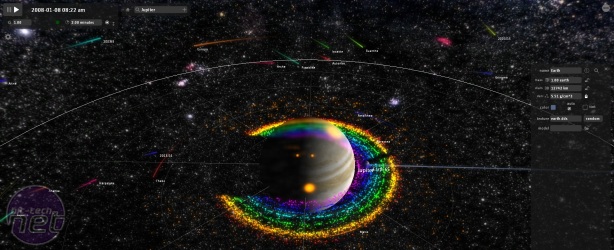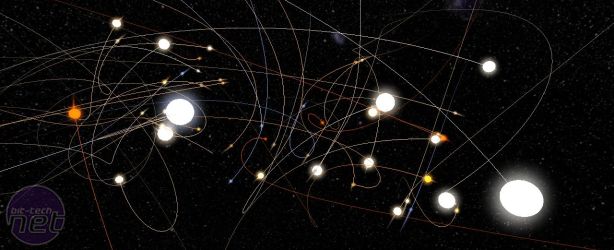
Universe Sandbox Review
Publisher: Giant ArmyPlatform: PC Exclusive
UK Price (as reviewed): £6.99 (inc VAT)
US Price (as reviewed): $9.99 (ex tax)
Universe Sandbox isn’t a game per se; there are no bosses, aims or levels, merely an accurate model of astronomical bodies for you to fiddle with. It’s really more of a toy – the virtual equivalent of a configurable orrery, except hugely more complex than any mechanical system.
That complexity is one of the key attractions that Universe Sandbox possesses. Using the vast range of variables and tools at your disposal you can create some enormously convoluted displays of physics, bending cosmic laws to your will out of nothing more than a desire to see pretty patterns form on your screen. You can move galaxies around so that they tear themselves apart beautifully, casting off clouds of stars into the abyss as part of their death throes.
Manipulating galaxies like this is just the beginning, however. There’s almost no end to the chaos you can wreak on your model universe, though rattling on about what you can achieve isn’t nearly as interesting as asking the questions you aim to answer. What happens to Earth if you double the mass of the Moon? How would the solar system react if you placed Saturn’s rings around Mars? What will Earth’s orbit look like 100 million years from now? How would the spirals of the Milky Way be disrupted if the outer arms intersected with the Large Magellanic Cloud?
There are a series of example experiments to help ease you into the level of curiosity that Universe Sandbox requires – each one acting as a tutorial – but the real fun lies in creating your own simulations. This can be achieved by manipulating existing models, which include recent galactic events such as the Shoemaker-Levy 9 collision with Jupiter in 1994, or by creating your own.
Unfortunately, it’s here where Universe Sandbox starts to stumble, as there’s no real introduction to any of the more advanced tools. Learning how to alter the mass of a planet to change the orbit of its moons is a case of painful trial and error, which is further thwarted by occasionally fiddly controls. Trying to keep the camera in an absolute position, so that you can watch an entire system disperse when you explode the central star, seems especially difficult, for example.
The good news, however, is that Universe Sandbox seems to be undergoing regular updates – with creator Dan Dixon describing the game as a labour of love on which he plans to iterate for years to come. Hopefully the immediate focus won’t be on adding whole new features, as Universe Sandbox is already an impressive experience, but on improving accessibility and promoting player imagination. Small additions, such as a ‘Fact of the Day’ message on launch, would go a long way towards staving off the inevitable collapse of curiosity that results from players running out of questions to ask.
A lack of scientific information is, when you get right down to it, Universe Sandbox’s biggest and most ironic oversight. While it’s initially lots of fun to just jump in and watch the pretty light trails as you spin them into half-chaotic patterns, this enjoyment quickly plateaus when you realise you’re not really getting much of an indication of why the simulation runs the way it does. Adding a report function to explain, for example, what would ultimately happen to the moons of Saturn if you flung them all out into deep space, would instantly improve the entire experience.
Still, it’s hard to get too dissatisfied with Universe Sandbox when you factor in both the fact that it’s a one-man labour of love and that it’s available at a bargain price. If nothing else it offers something uniquely interesting and fun, which is quick to inspire imagination and creativity, even if it lacks the educational aspect that you might expect.

-
Overall80 / 100


MSI MPG Velox 100R Chassis Review
October 14 2021 | 15:04











Want to comment? Please log in.